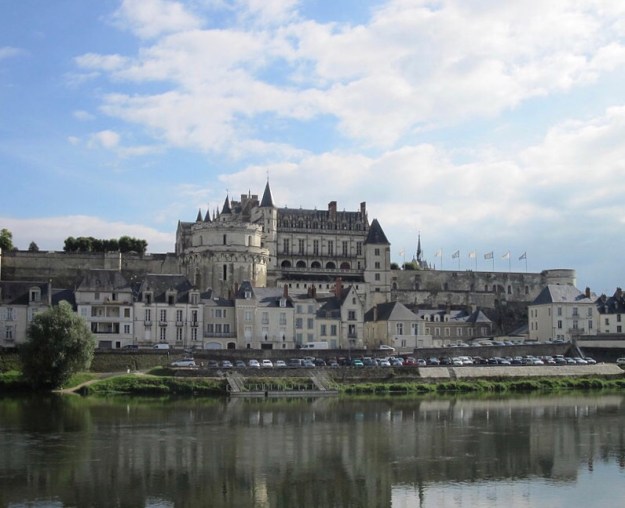
What if your job was to guard a strategic section of the important River Loire? And this was in medieval times when rival nobles considered themselves mini-monarchs with a duty to become maxi-monarchs by grabbing the lands and strongholds of their neighbors?

You’d probably build yourself a sturdy fort high on the riverbank and post lookouts in both directions. This happened all over Europe, and it happened in Amboise, on the River Loire in France. The exact history is hazy, but by the 900s the powerful Angevin counts had a fortress at Amboise. From the top of their sheer stone walls they could see everything happening below them in the town and on the river. Over the next few centuries, the nobles began owing their allegiance to actual kings of France.

In 1431, Louis d’Amboise, Viscount of Thours, was convicted of plotting against King Louis XI and sentenced to death. But instead he languished in prison until 1434 when the new king, Charles VIII, pardoned him. That was the good news. The bad news was that the king confiscated the chateau and it became the permanent property of the Crown.

Charles VIII grew up at Amboise. As an adult, he decided to extensively rebuild his childhood home.

Possibly he should have paid more attention to the details. Or possibly he just should have watched where he was going. At the age of 27, he knocked his head against a low door lintel and died. He left his young widow, Anne of Brittany, with the ironclad obligation of marrying his cousin, who became King Louis XII. Anne was still Queen.
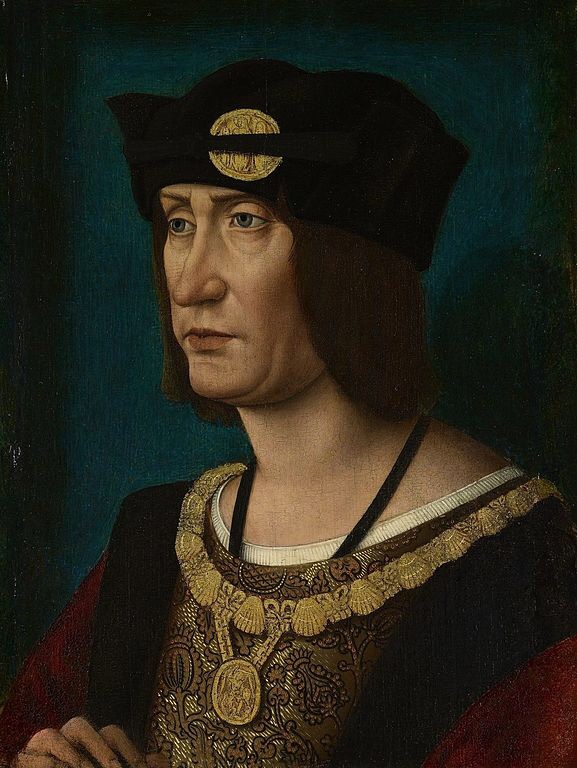
Louis XII, Workshop of Jean Perréal, 1514, Public Domain
All this had been carefully written into the marriage contract, in order to assure that wealthy Brittany remained part of France.

However, after all that careful planning, Louis XII died without a male heir. So his cousin Francois became King Francois I. The young King Francois was raised at Amboise and lived there as an adult. He brought Leonardo da Vinci from Italy to Amboise to live out his golden years.

Le Mort de Leonardo da Vinci, Francois-Guillaume Menageot, 1781
There’s a famous painting depicting Francois tenderly nursing the dying Leonardo, but actually Francois was not present at the time, in 1519. However, the King did install Leonardo in a very nice mansion, Clos Lucé, just up the street. There was a tunnel connecting the mansion and the chateau so the two men could visit each other. It’s just a guess, but I think Francois did most of the visiting, glad to get away from the pressures of his court.
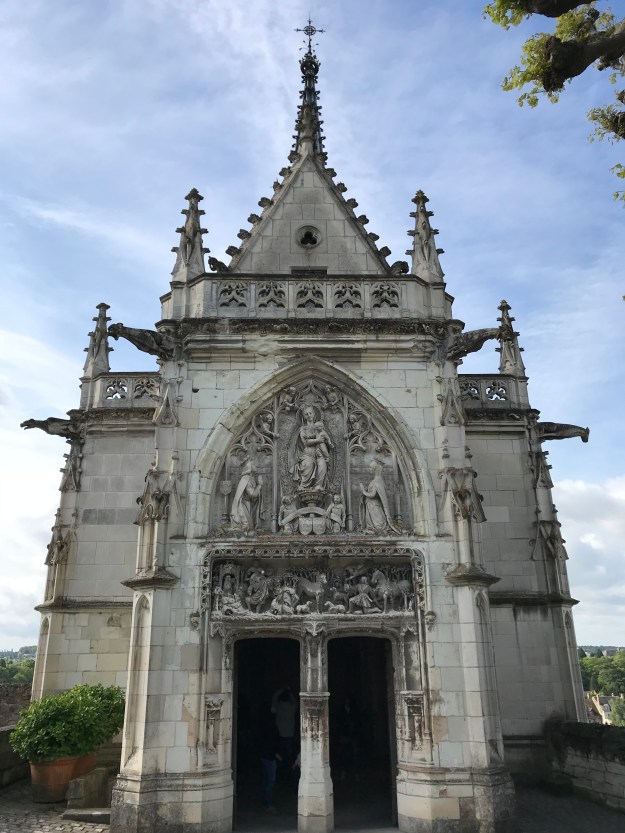
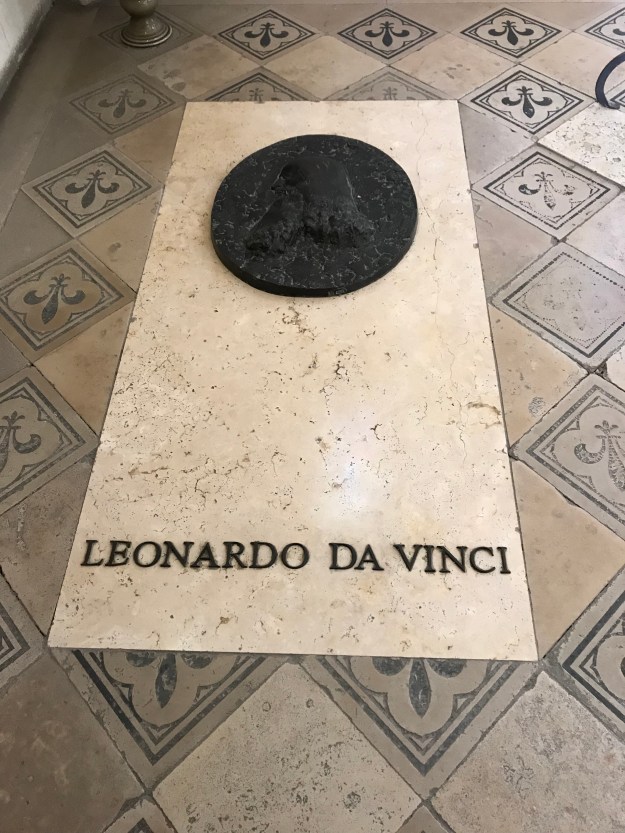
And Leonardo was buried in the chapel on the chateau grounds.

In 1560, France was embroiled in the Wars of Religion. A Protestant conspiracy was discovered and dealt with harshly. Over a period of about a month, as many as 1200 people were executed and many were hung from the castle ramparts, where they remained for a long time. This was not pleasant for anyone, including the chateau residents. The royals and courtiers departed, and Amboise began to fall into decline. The stained glass panel above is a modern depiction of the grisly situation.

Today, the approach to the castle is from the lively town of Amboise nestled below the formidable castle walls. That’s the royal chapel on top, where Leonardo rests.
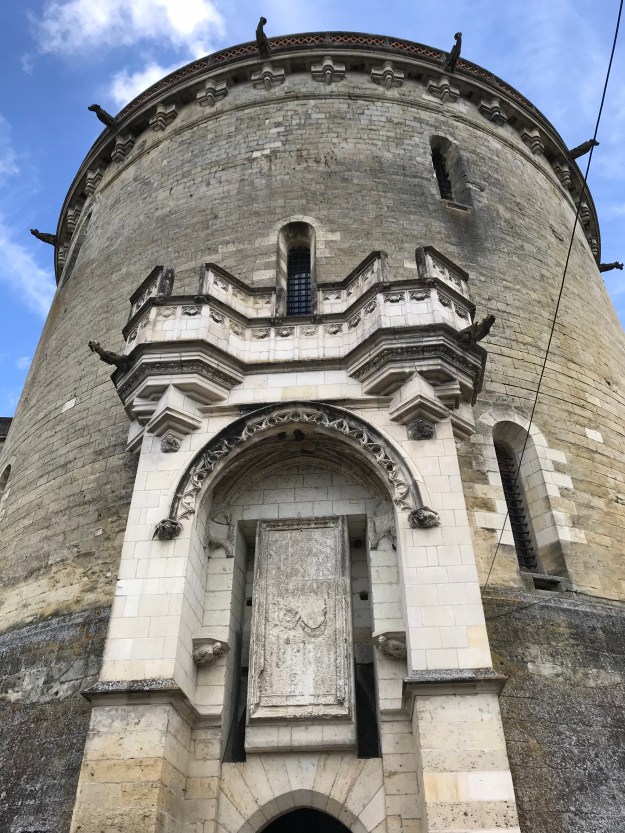
The architecture is still forbidding. Nobody would wander in without an invitation.

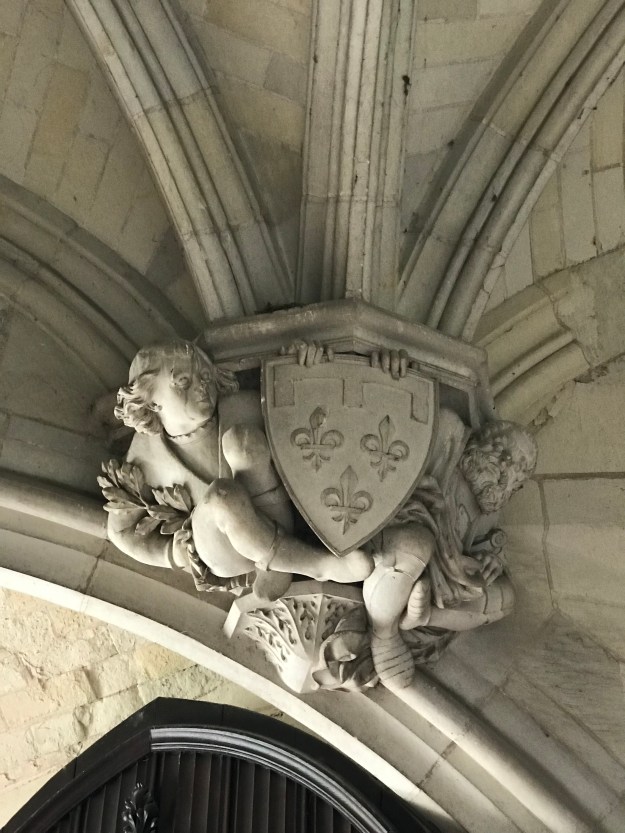

The townside tower has a ramp big enough for several horsemen to ascend together. The ancient stonework is meant to impress and intimidate.

The castle itself, much restored and added to over the years, looks inviting, at least on a sunny day.

For me, the royal Chapel of St. Hubert is the best part of the whole chateau complex. It deserves its own post.
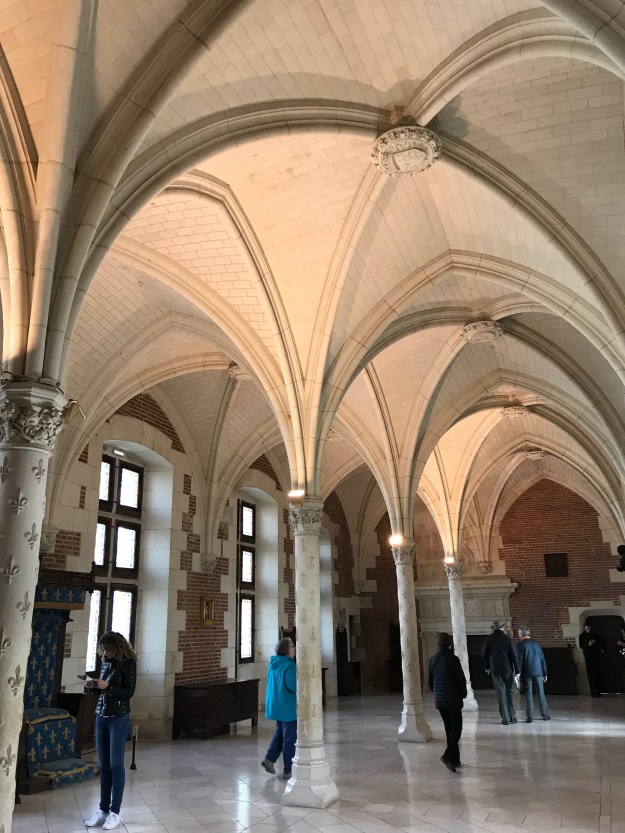

Inside the castle itself, though, there’s a lot to admire. The main hall is impressive.

I especially loved the stone corbels at the bases of the arches. I think the castle walls really did have ears. This fellow seems like a reminder to be careful of the intrigues of court life.
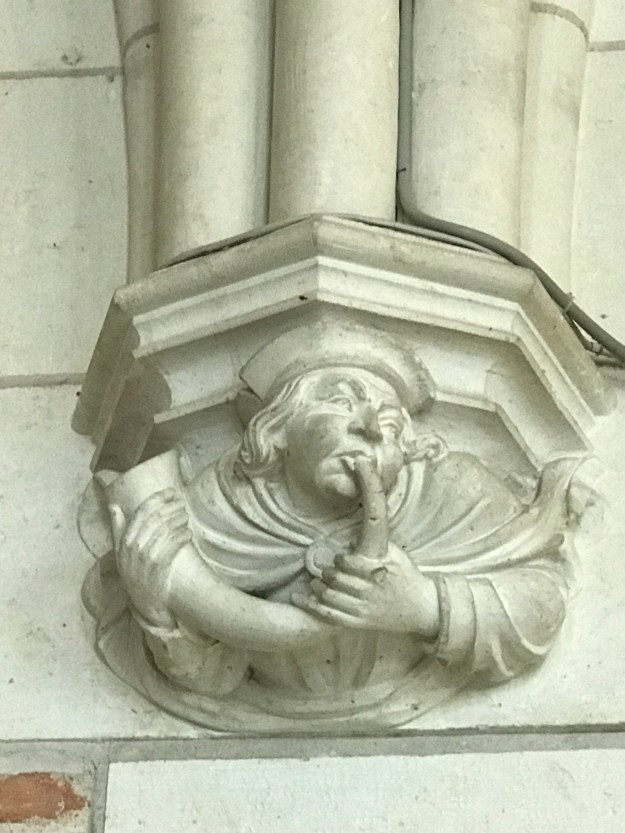
Anybody’s secrets could be trumpeted far and wide.
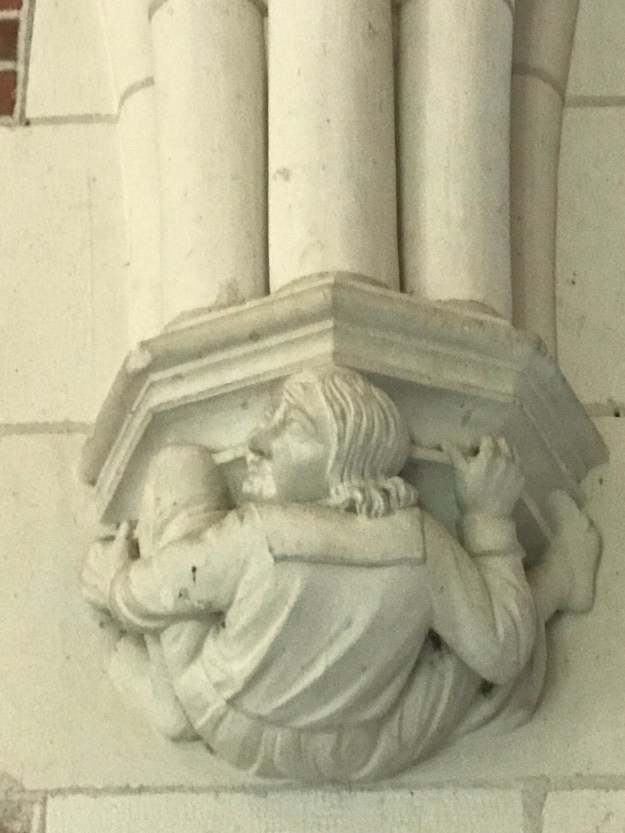
Does this fellow want out?
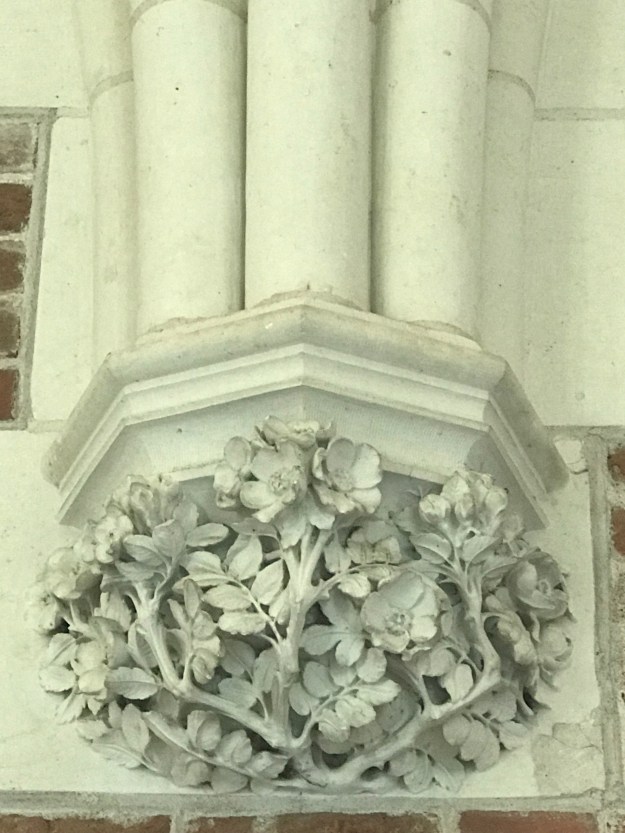
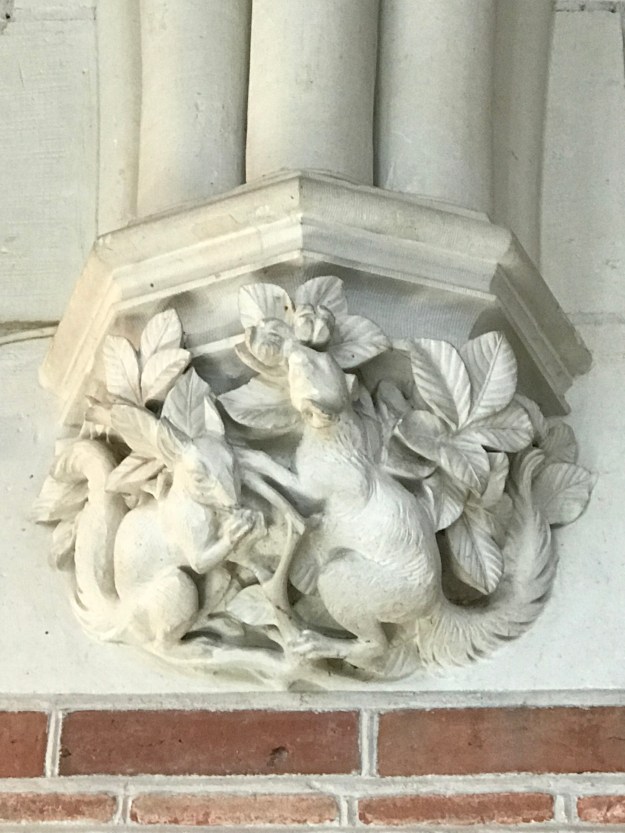
Of course the pleasures of nature were close at hand in the royal hunting grounds.
 Are those the thistles of Scotland? Mary Stuart, who later became Queen of Scots, lived here as a child, then returned as a very young bride after marrying the Dauphin Francis in 1558. (He died young and she returned to Scotland).
Are those the thistles of Scotland? Mary Stuart, who later became Queen of Scots, lived here as a child, then returned as a very young bride after marrying the Dauphin Francis in 1558. (He died young and she returned to Scotland).

There’s Francois I, supported by his symbol the flame-breathing salamander.
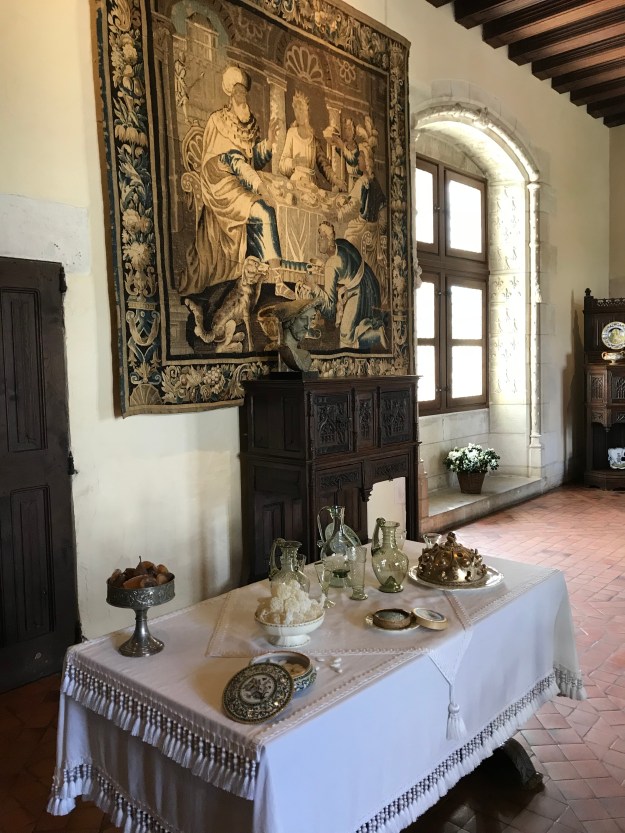
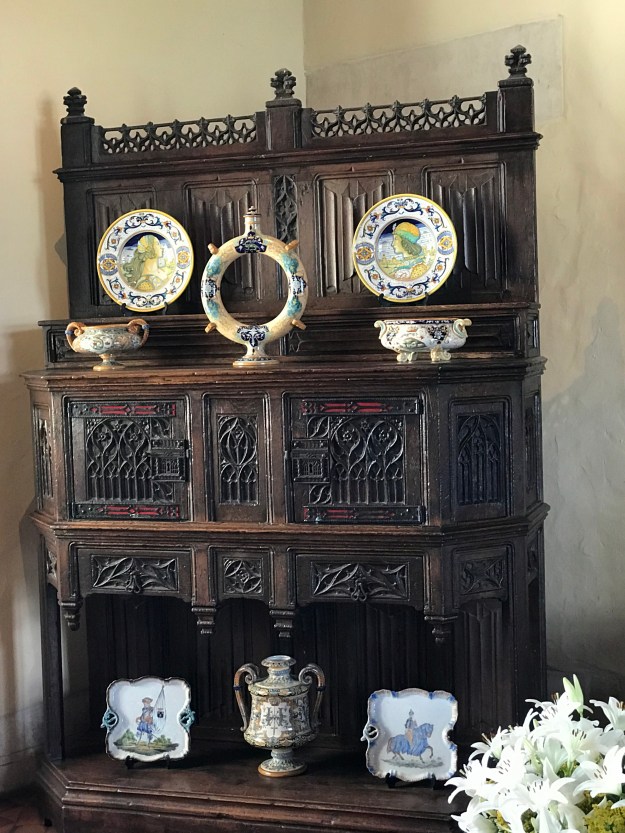

I don’t think any of the furnishings or even the rooms are in their original state–the chateau is too old for that, and too many lives have been lived there. But the rooms have the flavor of various historical periods. Above are fine Renaissance pieces.
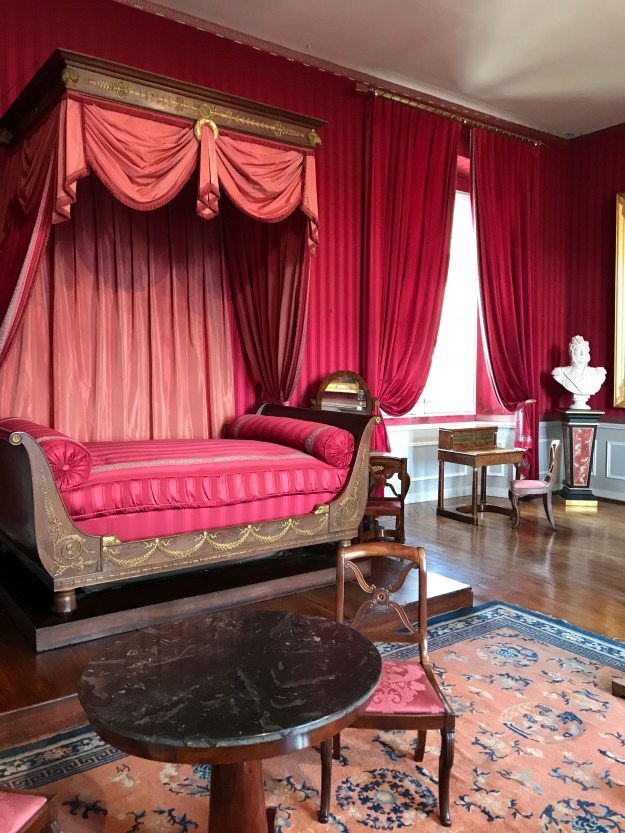

Then there are rooms with a more Napoleonic flavor–although after the Revolution the damage was so great that Napoleon ordered large parts of the chateau demolished.
In fact, the chateau is not very well explained. There are placards, some in English as well as French. But even the French information seems pretty cursory. I know, for instance, that residents included Nicholas Fouquet after his arrest for angering Louis XIV by building a lavish chateau at Vaux-le-Vicomte. Henri II and Catherine de Medici raised their family here. But I couldn’t find any information about any of these people. Possibly some rooms were closed, or I missed some rooms.

Amboise is not my very favorite chateau, but it’s well worth a wander. And the pretty town of Amboise is a fine base for the Loire Valley.
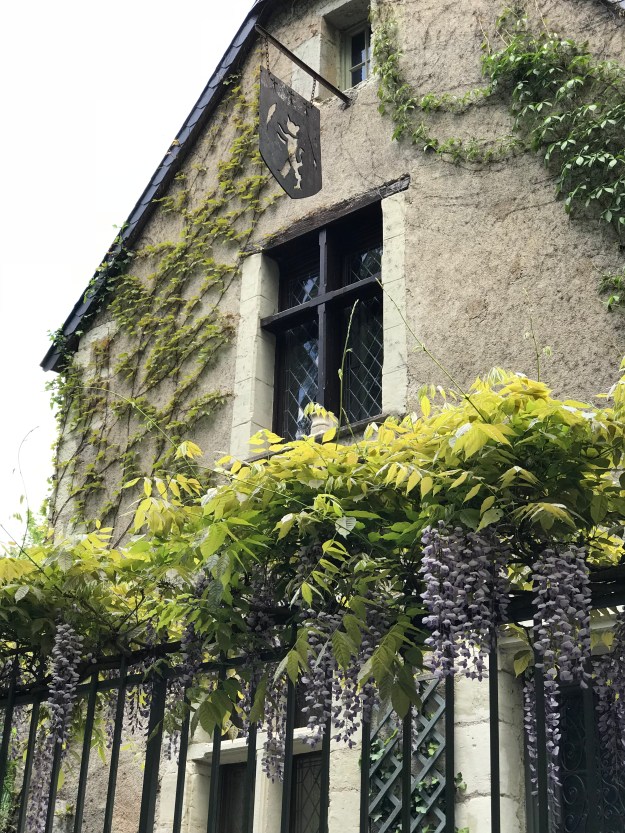
Just walking the back streets is fun. It’s a real town, not a tourist trap. People live in pretty houses set in leafy yards.


In small houses that open onto the meandering main road, I admired one pretty doorway after another.
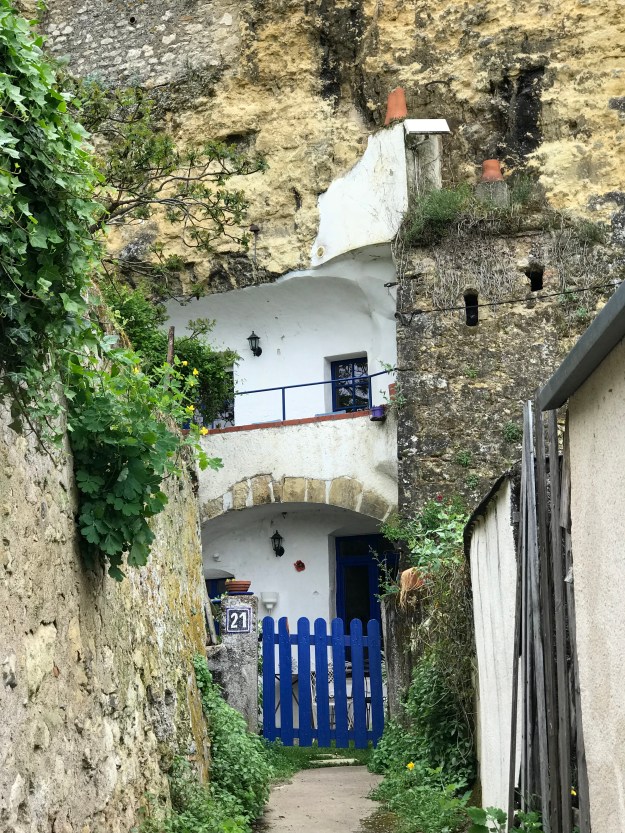
Some people live in ancient cave houses tunneled into the tufa stone bluffs, and a few of these cave homes are available to rent.
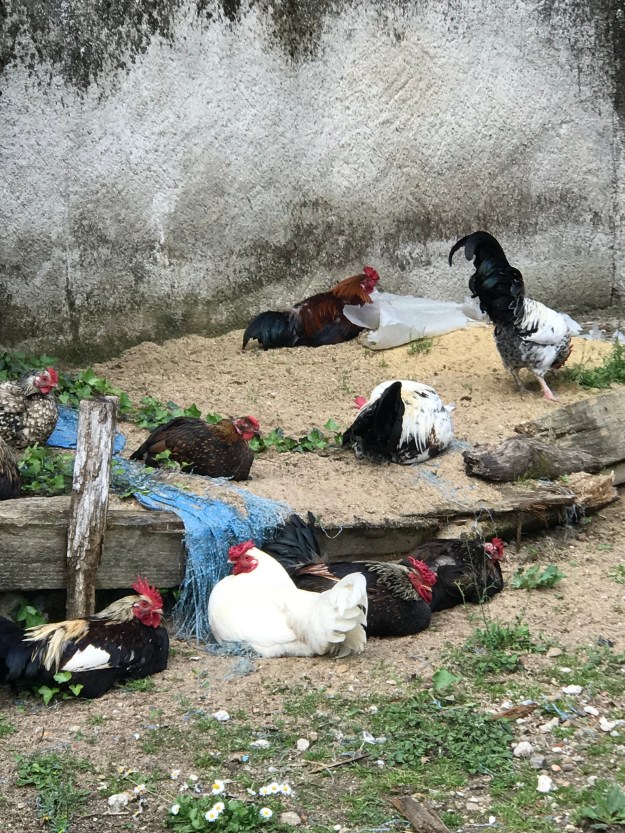
Right down the street from the chateau, Leonardo da Vinci’s last home is a big attraction. There’s also a new attraction called Château Gaillard–more on that in another post. Yet just down a narrow alley from these world-class attractions, I stopped to admire these feathery beauties just hanging out in their unfenced yard.
Amboise is a fine town where it’s still possible to get away from the tourist crush. Nobody here but us chickens!



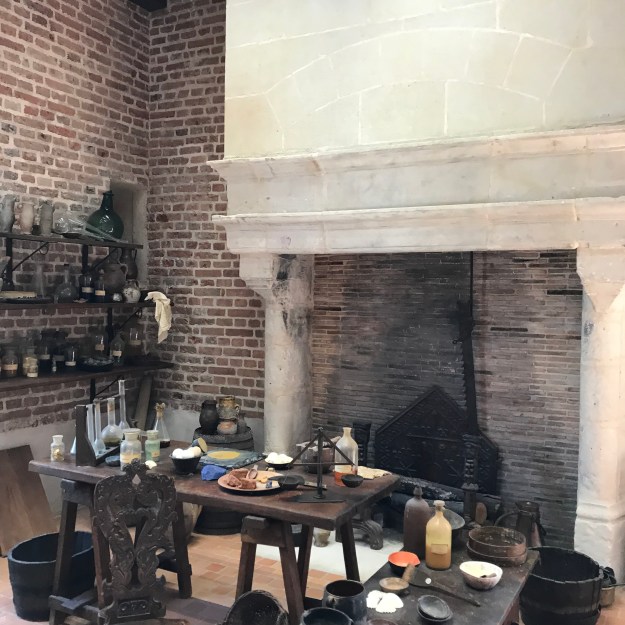






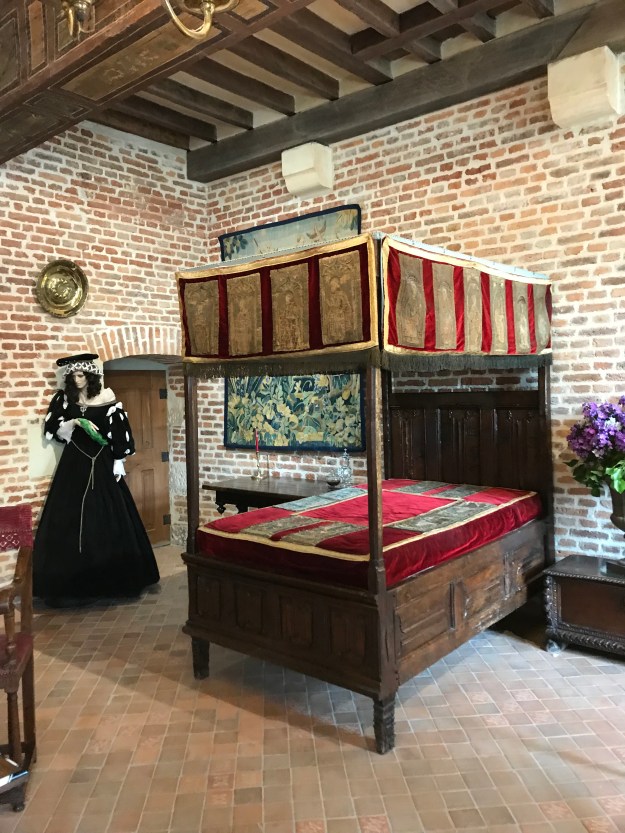
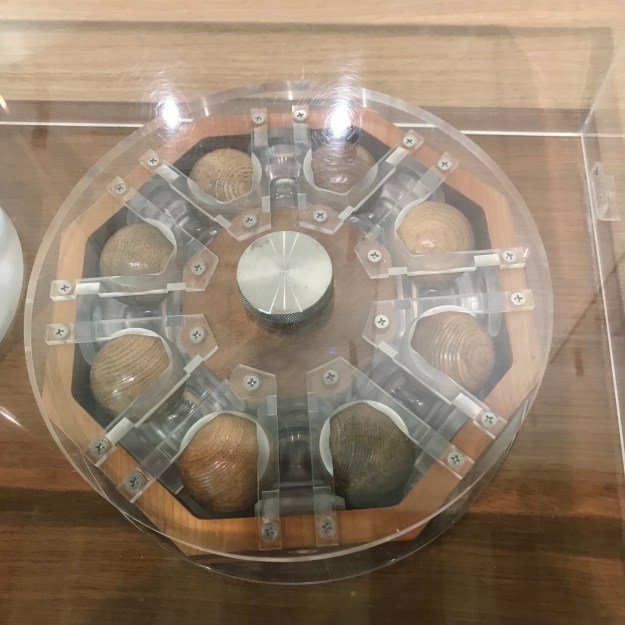
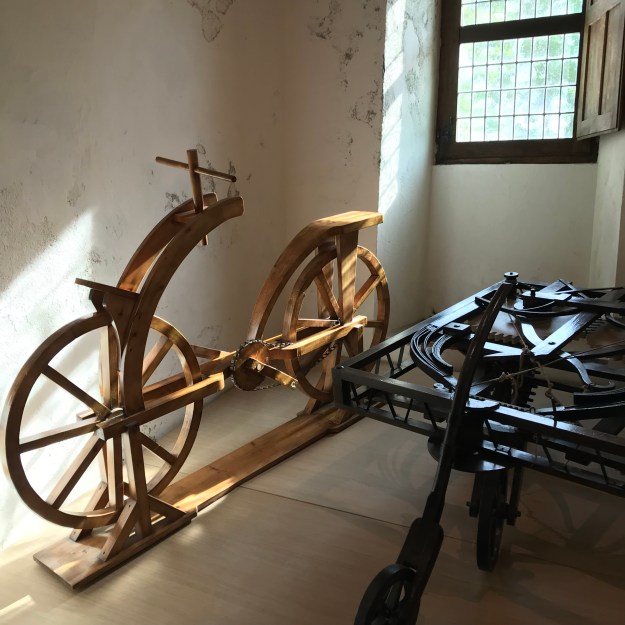
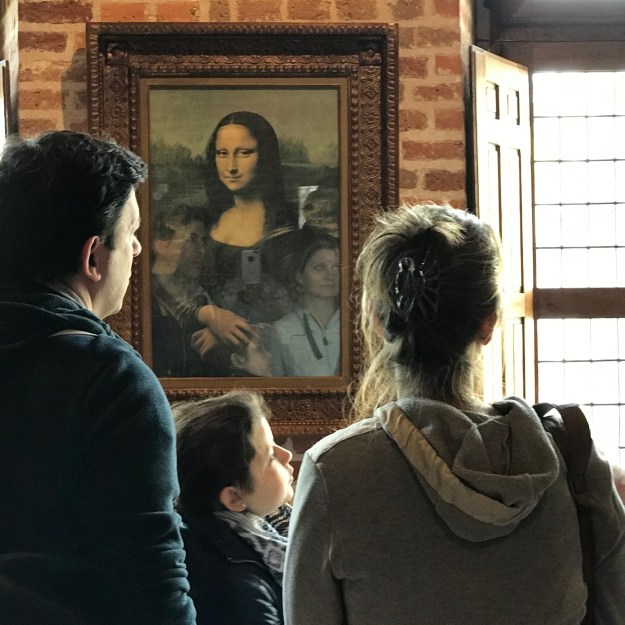

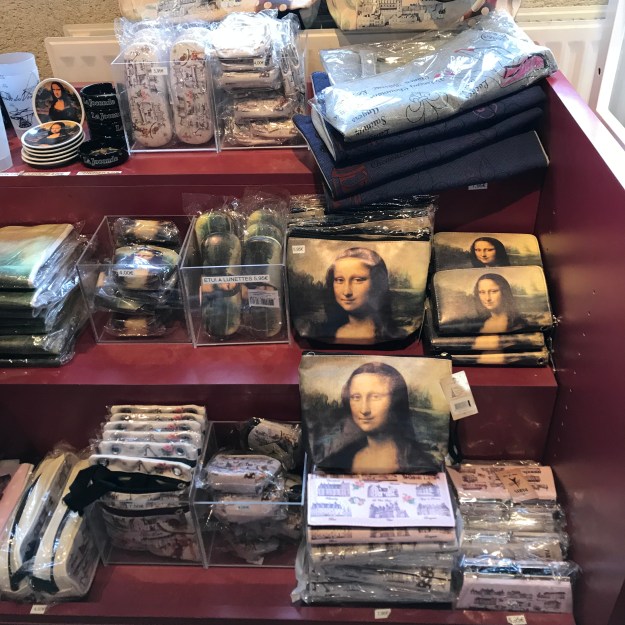

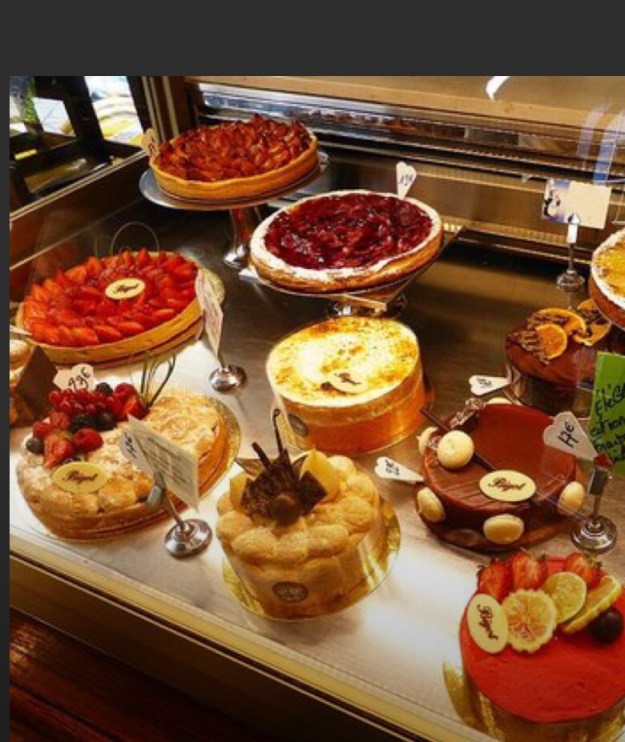
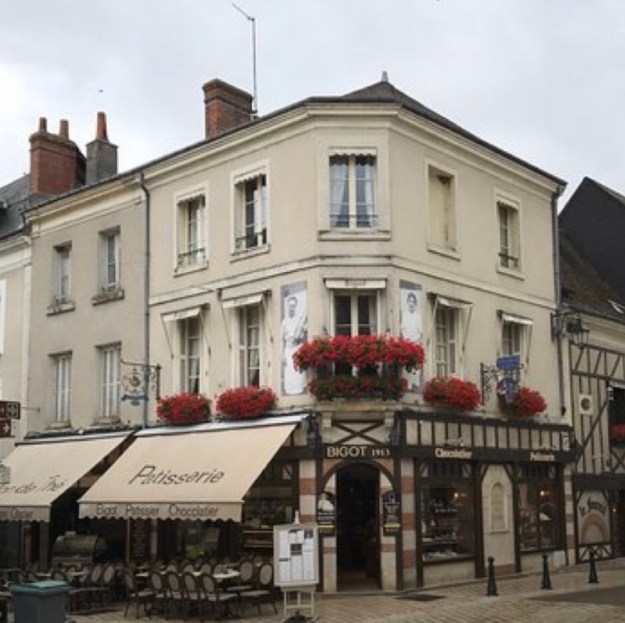


























 Are those the thistles of Scotland? Mary Stuart, who later became Queen of Scots, lived here as a child, then returned as a very young bride after marrying the Dauphin Francis in 1558. (He died young and she returned to Scotland).
Are those the thistles of Scotland? Mary Stuart, who later became Queen of Scots, lived here as a child, then returned as a very young bride after marrying the Dauphin Francis in 1558. (He died young and she returned to Scotland).










